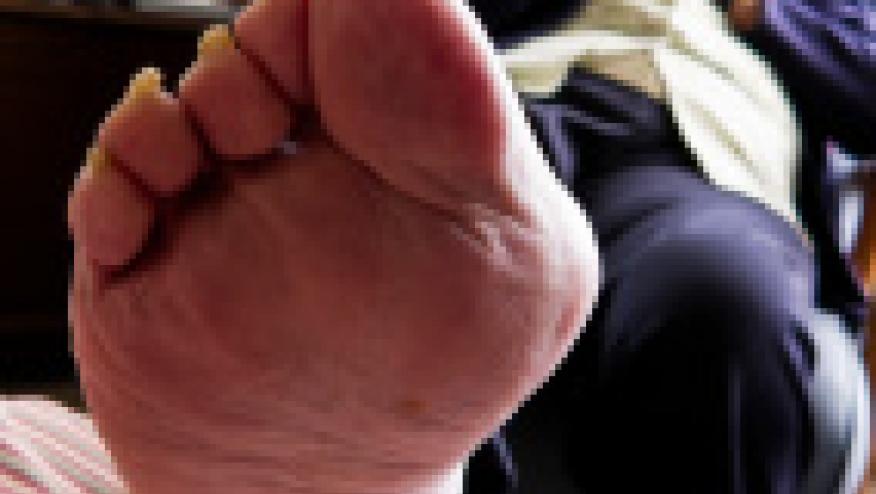The UnderManagement of Gout Save

Rheumatologists manage less than 3% of all gout patients in the United States (USA). In 2002, there was 3.9 million outpatient visits for gout, but only 1.3% were to rheumatologists (http://buff.ly/2lRXgbS). While nearly 70% of the 8.3 million with gout are under the care of primary care physicians, they only refer 3% of their gout patients to rheumatologists for care.
Most physicians believe they understand and can manage gout. Surveys show that 86% of PCPs are “comfortable” managing gout. Yet the data is clear that many physicians, regardless of specialty, consistently mismanage gout. This includes omissions, miss-steps and archaic thinking, all leading to many errors acute gout management, including the under-use and under-monitoring of urate lowering therapy (ULT) and diagnostic evaluations.
Rheumatologists believe they manage gout best. This contention is supported by comparisons of PCPs and rheumatologists where the latter are better with regard to lower cost, fewer symptomatic or hospitalized days, higher allopurinol doses, more lab monitoring and more success in achieving a target serum uric acid (SUA) level of < 6.0 mg/dl. However, rheumatologists are also guilty of many of the problems that plague gout management.
The prevalence of gout has doubled in the USA in the last 30 yrs, and in the UK it has risen 65% in the last 15 years. In recent years several new pharmaceutical companies have launched multiple new drugs for gout, all touting a great unmet need for new and better therapies.
This should be a grand new era of widespread education, earlier, accurate diagnoses and more effective management of gout patients.
It is not; and unfortunately, there exists converse proof:.
Failures in Gout Care
- Gout (8.3 million) out numbers rheumatoid arthritis (RA) by almost 8:1. Sadly gout is under-represented in rheumatology practices by 1:8 (compared to RA).
- In the US, 3.1 million (~16%) are on urate lowering therapy. In the UK and Sweden, low rates (17-32%) are also seen. http://buff.ly/2mcGyPI
- Of those treated with allopurinol, only 40% have uric acid levels at or below the SUA target of < 6.0 mg/dl.
- Gout is under-managed by those who believe they can treat gout. Compared to rheumatologists, PCPs are less likely to refer, monitor while on ULT, use prophylaxis with ULT, achieve a treatment target.
- Many consider gout treatment the management of “acute gout”, without considering prevention or chronic management with ULT.
- Vast majority of those who know or understand gout are ignorant of the lifestyle changes that should be employed in every patient with gout.
- Hyperuricemia affects 43.3 million (21%) US adults, while 8.3 million have gout, and over 20 million have nephrolithiasis – the remaining are considered to be “asymptomatic” which disregards the well, repeatedly documented hazards of hyperuricemia on CV risk, HTN, Renal disease and much more. Shouldn’t asymptomatic hyperuricemia be considered “Preclinical” gout?
- In primary care, annual monitoring of serum uric acid occurs in less than one-third of patients.
- Achievement of a uric acid target is amazingly poor in studies of primary care and rheumatology practices and is generally below 40%.
- In the USA and Canada, RA hospitalizations declined, but Gout hospitalizations have increased.
- The mortality gap has closed in RA, but remains unchanged in gout.
- Gout runs with a bad pack of comorbidities (obesity, HTN, dyslipidemia, diabetes, etc.) and should be considered a risk factor for the metabolic syndrome.
- Gout patients are among the worst with regard to drug adherence and compliance.
- Noncompliant gout patients are usually unaware of the common triggers of gout, while at the same time they are keenly interested in dietary solutions, and yet disregard proven, effective medications for gout.
- Guidelines have not changed practice and there are high rates of discordance between common practice and ACR or EULAR guidelines. Studies show even rheumatologists compliance with the 2012 ACR gout guidelines in generally 50% or less.
The Problem with Drugs and Drug Companies
- Colchicine: aka “Colcrys”; a new name at a much higher price that’s still high in the USA even though the drug has gone generic. I’m told it is widely available and much cheaper in Canada. It was granted orphan drug exclusivity till 2016. Since introduced in 2009, colchicine use (Rx) has declined while the costs have increased dramatically (http://buff.ly/2mEwFhf). What use to be a generic penny drug has become a sales leader for Takeda with Colcrys sales being $400-600 million annually in the last few years. With the objectionable introduction of Colcrys I found that I hardly ever need to use colchicine when I have other agents for acute management and prophylaxis (NSAIDs, steroids).
- Allopurinol: Ironwood (now marketing the new drug Lesinurad) estimates that there are more than 4 million U.S. patients treated with allopurinol; half of whom are “uncontrolled”. This amounts to about $300 million in allopurinol sales annually.
- Febuxostat (Uloric): Approved in 2009, it sold an estimated $411 million in sales in 2014, but since 2015 the drugs patent has run out and lead to the availability of generic febuxostat. Febuxostat has been shown to be safe in patients with mild to moderate renal insufficiency and can be combined with other agents. While there is over 1 million prescriptions annually for febuxostat, recent studies (NEJM 3/29/18) again question the safety of febuxostat as large controlled randomized study of gout patients with cardiovascular disease showed that (compared to allopurinol) patients treated with febuxostat had significantly higher rates of all-cause and cardiovascular mortality (22% and 34%, respectively).
- Pegloticase (Krystexxa): the uptake of this novel therapy has been slow since its FDA approval in 2010 for use in adults with chronic, refractory gout.. Sales in 2017 were reported to be $156 million, up from $91 million in 2016. The primary data on this agent comes from the two pivotal trials of 225 patients with severe gout, allopurinol failure and sUA > 8.0 mg/dL. Since published in 2011 there are a few new trials aimed at improving safety, tolerability and patient outomes for this very effective agent.
- Lesinurad (Zurampic): is the latest FDA approved drug (10/16) for uncontrolled gout and can only be added to allopurinol (or febuxostat) when gout patients have failed to be controlled by allopurinol (or XOI) alone. In the last quarter of 2016 lesinurad achieved $100,000 in quarterly sales with nearly 371 prescriptions. I’m having a hard time imagining how this drug can be used in XOI failures, especially when there is ample widespread evidence of allopurinol underdosing and misuse and lack of monitoring. Is this a solution to fix half-assed allopurinol prescribing practices? The drug is modestly effective and may be hampered by cost and renal risks.
- The Drug Companies: The financial returns in gout therapeutics have been astounding in the last 8 years. But, the commitment to education has been pawltry by comparison. Education beyond promotional lectures and advisory boards is pawltry. Companies selling and working in this have an obligation to improve gout education, to partner with gout experts (rheumatologists) and impact the standard of care in gout, and patient outcomess. Currently sales figures (which have been substantial) has been the only measure of impact.
In summary, efforts to control and minimize the societal effects of gout, the most common inflammatory arthritis in the USA, have been inadequate.
- The ACR and other vested societies have established guidelines and recommendations. However, disagreement, noncompliance and lack of education have undermined the potential gains that should accompany societal guidelines
- Pharmaceutical companies should be ashamed for what they haven’t done. They’ve launched several new drugs to market, all a dramatically higher price point and have acted as opportunists and not as educators or partners. Promotional lectures are to this problem what a Doritos commercial is to the healthy eating problem.
- Rheumatologists have done little promote themselves as experts in gout.
- There are not enough gout researchers, mavens and educators to tackle the ubiquitous need for education and research to change current practices.
- There is insufficient funding available for basic and clinical research or studies of public health policies impacting gout.
“It ain’t what you don’t know that gets you in trouble. It’s what you know for sure that just ain’t so.” - Mark Twain










If you are a health practitioner, you may Login/Register to comment.
Due to the nature of these comment forums, only health practitioners are allowed to comment at this time.